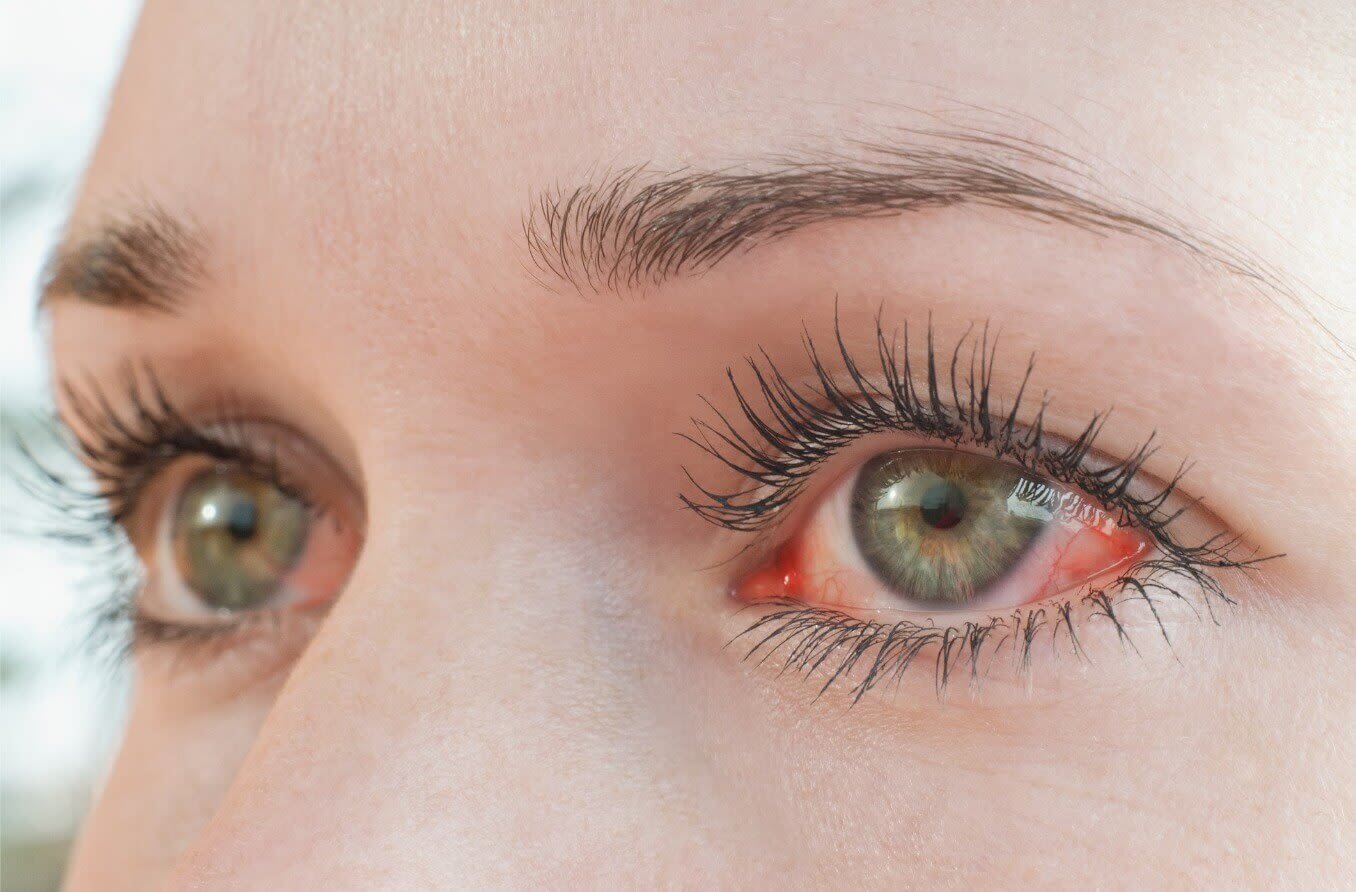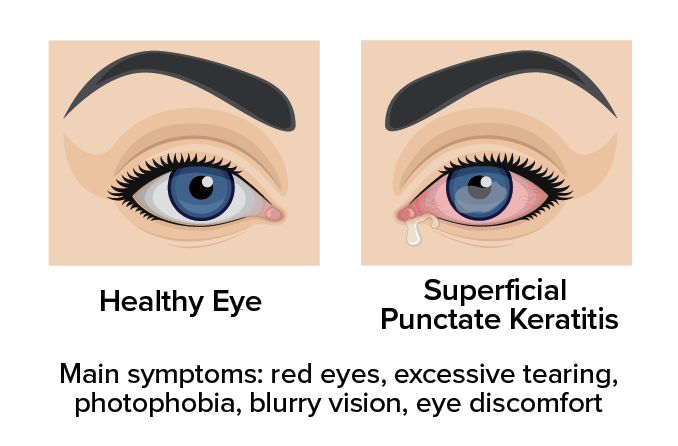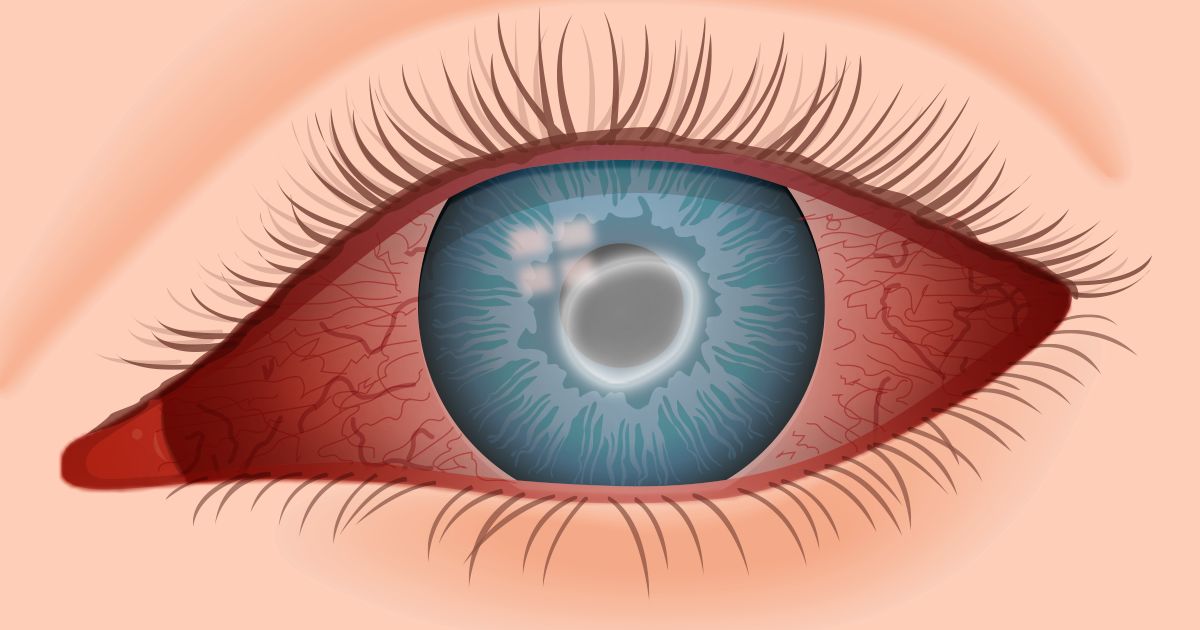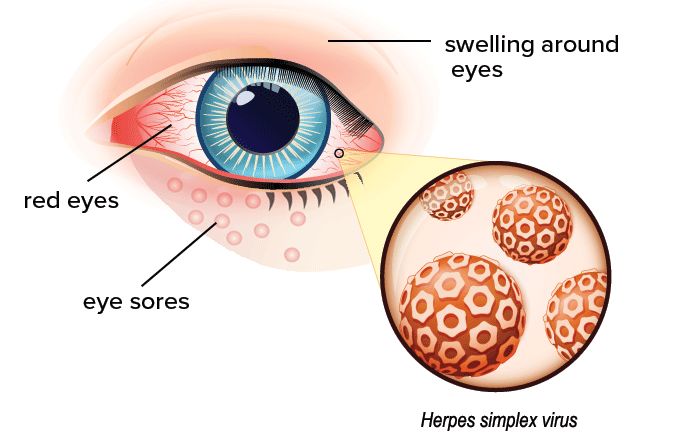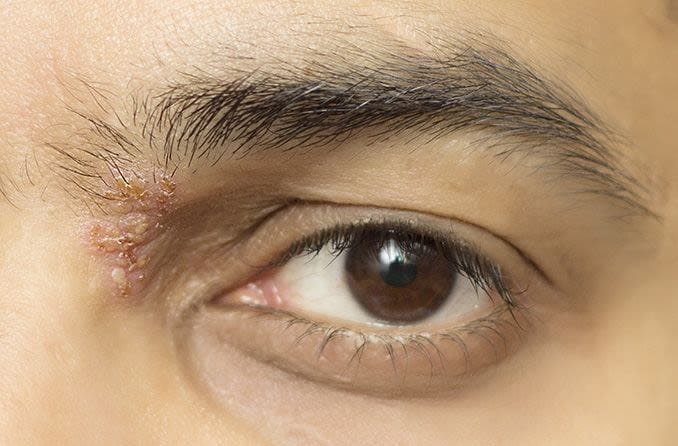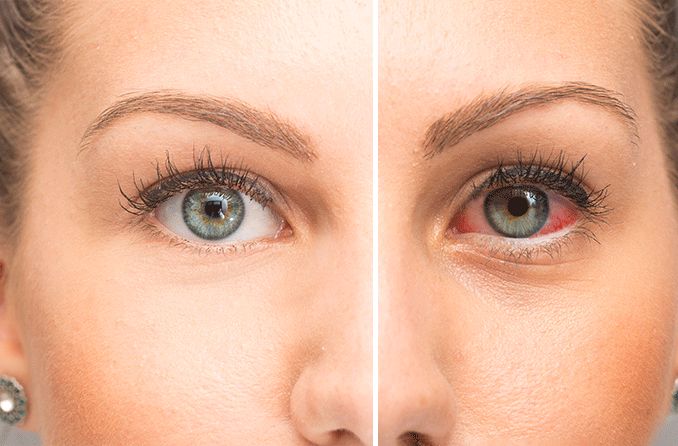What is photokeratitis?
Photokeratitis is a temporary eye condition caused by ultraviolet (UV) rays. It occurs when the cornea (clear outer layer of the eye) and conjunctiva (membrane covering the whites of the eyes and inside the eyelids) are exposed to intense UV energy rays from the sun or an artificial source.
Photokeratitis, also called ultraviolet (UV) keratitis, is often a painful condition, with symptoms ranging from mild to severe.
Types of photokeratitis
Common types of photokeratitis include:
Snow blindness
Snow blindness occurs when UV rays from the sun reflect off snow or ice and damage your eyes. UV keratitis is common in higher altitudes where the air offers less ultraviolet protection, such as high mountainous regions and the North and South Poles.
Arc eye
Arc eye results from the flash of UV light produced by welding equipment. Because of this, it’s also called welder’s flash or welder’s eye. Photokeratitis is the most commonly occurring eye damage caused by the welding process.

Sunburned eyes
Sunburned eyes result from direct exposure to the sun or glare from reflective surfaces.
Prolonged exposure to UV rays can lead to other types of eye damage or conditions.
Causes of photokeratitis
The most common source of ultraviolet energy is the sun. UV rays are produced in three different types of wavelengths:
- UV-A
- UV-B
- UV-C
UV-A and UV-B rays from the sun can cause damage to the eyes. While UV-C rays from the sun typically do not penetrate the earth’s ozone layer, they are produced by artificial light sources, such as lasers or lamps. UV-C rays from artificial sources can also harm the eyes.
The most common causes of photokeratitis include:
- Direct sunlight
- Reflection of sunlight off snow, ice, cement, sand or water
- Welding arcs
- Germicidal UV lamps
- Tanning beds
- Sun lamps
- Halogen lamps
- Mercury vapor lamps
- Lasers
Ultraviolet radiation can have short-and long-term effects on the eyes and can affect vision. It damages the epithelial layer of cells protecting the cornea, causing it to slough off. This exposes corneal nerves, leading to pain and discomfort.
Extended exposure to UV rays can harm the underlying stromal and endothelial layers of the cornea.
SEE RELATED: UV and sunglasses: How to protect your eyes
Symptoms of photokeratitis
Symptoms of ultraviolet photokeratitis may occur within 30 minutes to 12 hours of UV exposure and typically affect both eyes. Photokeratitis symptoms commonly include:
- Eye pain
- Light sensitivity
- Watery eyes
- Eyelid redness
- Eye inflammation
- Blurry vision
- Gritty or foreign body sensation
- Eyelid spasms
- Temporary vision loss
UV keratitis symptoms may last between six and 24 hours after exposure and generally resolve within two days. The length of exposure to ultraviolet rays can affect the severity of symptoms.
Risk factors of photokeratitis
Several factors may heighten the chance of eye damage from ultraviolet rays. The lack of proper eye protection in the presence of UV rays is the primary risk factor for photokeratitis. Sun reflection off snow and welder’s flash are among the most commonly reported.
Factors that increase the risk of photokeratitis involve:
- Unprotected exposure to ultraviolet light
- Sunlight reflection off snow, ice, sand, cement or water
- Arc welding equipment
- Sun exposure during recreational activities
- Higher altitudes
- Artificial sources of UV light (tanning beds, sun lamps, laboratory or germicidal ultraviolet lights)
Complications of UV exposure
Damage to the cornea and conjunctiva from photokeratitis is often temporary as the condition usually resolves on its own within a couple of days. Though rare, vision loss and vision changes may be temporary effects of UV keratitis.
Long-term exposure to ultraviolet radiation accumulates over time. It can increase the risk of serious eye conditions, including macular degeneration and cataracts. Extended UV exposure may also lead to growths on the cornea and conjunctiva known as pterygia (surfer’s eye) and pinguecula.
Looking directly at the sun for a period of time can burn the retina, the light-sensitive membrane in the back of the eye. Staring at the sun can cause significant and longer-lasting damage to the eye.
SEE RELATED: Solar retinopathy: Retina burn from sunlight
Diagnosing photokeratitis
Photokeratitis may be diagnosed through a physical eye exam. An eye specialist will evaluate the eyes and inquire about recent activities or factors that may have contributed to the condition. Eye drops containing a special orange dye, known as fluorescein, may be placed in the eye. The dye stains irregular areas on the surface of the cornea, revealing damage caused by ultraviolet rays.
Treatment options for photokeratitis
Treatment for photokeratitis usually centers on managing and relieving symptoms. Topical ointments, artificial tears or oral pain relief medication as recommended by an ophthalmologist may be used to ease eye discomfort as the cornea heals.
Other treatment-related recommendations for photokeratitis may include doing the following:
- Remove contact lenses promptly.
- Avoid sun or UV exposure.
- Remain in a darkened room.
- Avoid rubbing the eyes.
- Apply a cold washcloth to closed eyes.
Preventing photokeratitis
Wearing proper eye protection and safeguarding the eyes against the sun and UV radiation is key to preventing photokeratitis. The appropriate eye protection will depend on the activity or exposure risk at hand.
Sunglasses and snow goggles that block or absorb at least 99% of ultraviolet rays should be worn when the eyes are exposed to sun or snow. Eyewear designed to wrap around the sides of the head or those with side shields are ideal when spending time outdoors. Wearing a hat with a visor or wide brim can help further protect the eyes from UV radiation.
Wearing a welder’s helmet helps protect the eyes from UV radiation produced during arc welding. Full-face shield helmets with adjustable-shade levels are needed for sufficient protection.
UV-absorbing contact lenses are available for individuals who spend considerable time outdoors or in environments affected by ultraviolet light.
SEE RELATED: Solar eclipse and your eyes: How to view a solar eclipse safely
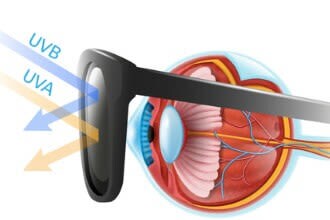
When to see an eye doctor
It is important to seek medical attention should eye pain or vision loss symptoms persist longer than 48 hours. Follow-up visits with an optometrist or ophthalmologist may also be recommended to ensure the cornea is healing and that symptoms have subsided. Any new or recurring symptoms should be evaluated promptly by an eye care professional.
READ NEXT: 5 eye conditions linked to sun damage

